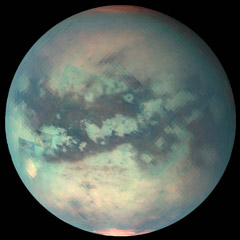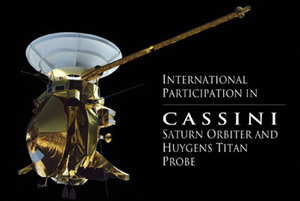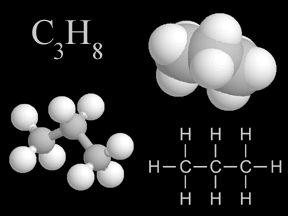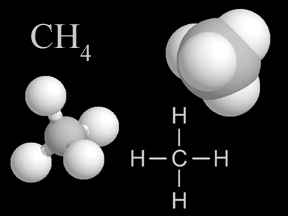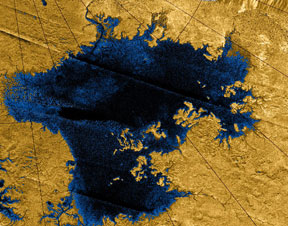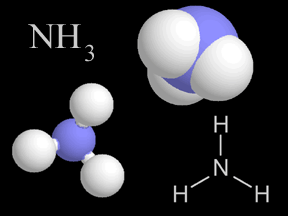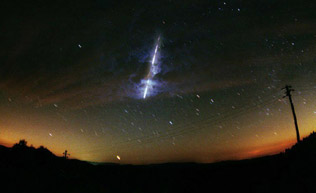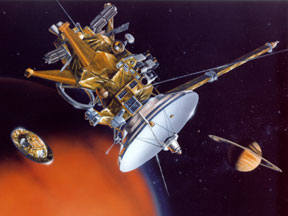Click on image for full size
Image courtesy of NASA/JPL/University of Arizona.
The Surface of Titan
Titan's thick atmosphere obscures the moon's surface. Until recently, scientists knew very little about Titan's surface. Now, largely thanks to images and radar data from the Cassini spacecraft and Huygens lander, a clearer picture of this mysterious moon's surface is beginning to emerge.
Many of Titan's surface features are shaped by liquids; but, in the case of frigid Titan, the liquid is not water. Instead, liquid hydrocarbons, especially methane ("natural gas") and ethane, sculpt Titan's surface. Lakes and possibly even small seas dot both of the moon's polar regions, especially Titan's North Pole. They are the first stable bodies of surface liquid found off Earth! Hydrocarbons continuously move between Titan's atmosphere and surface in a fashion similar to the water cycle on Earth. Channels that look like river systems on Earth carve sinuous paths through Titan's highlands; the channels may indicate that methane rain falls from Titan's clouds and flows, at least periodically, across the moon's surface. Geysers or "volcanoes", spouting mixtures of water and ammonia, may also erupt from time to time on Titan's surface.
While Titan's poles are dotted with lakes, its equatorial regions are dominated by dunes. Some dunes are up to 330 meters (over 1,000 feet) high! The particles that Titan's winds pile into dunes may consist of organic granules formed in the upper atmosphere, thoroughly un-like the silica-based sands on Earth. Highlands interrupt the vast dune fields at various places. The dunelands appear dark when viewed from space, while the highlands are light in color. Channels, which may be methane riverbeds, cut through the highlands. There are even some mountain ranges, with peaks up to 1 km (3,281 feet) tall.
Some impact craters have been spotted on Titan. The craters are few in number. Titan's thick atmosphere vaporizes most meteors before they can reach the surface. Also, the moon's surface seems quite "young" in geologic terms, indicating that Titan is geologically active.
The Huygens probe landed on Titan in January 2005. It sent back our first close-up looks of Titan, both from the ground and from the air above the surface as it parachuted down. Huygens images showed river-like channels cutting through highlands and terrain dotted with small ice rocks - for water ice becomes hard as stone at the frigid temperatures of Titan's surface (around -180° C or -355° F).


